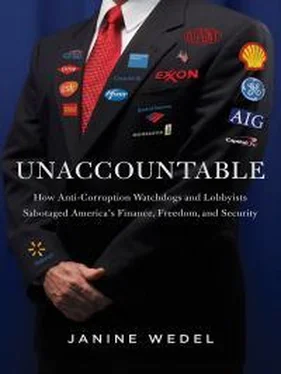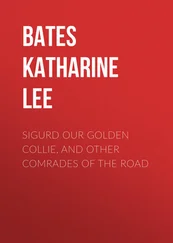This combination of performance-driven personalized media and the decimation of traditional media means that power brokers can now spin their agendas with many fewer journalists standing in the way to challenge them. The new media platform has squeezed out the old gatekeepers and, at the same time, provided those in power with inexpensive and easily exploitable new venues to press their interests. And as journalists either leave the profession or broaden their professional mandate, they risk aiding or aping the very power brokers they might once have held to account.
THE JOURNALISM-TO-PR MIGRATION
That growth in publicity brings us to an often-overlooked area of the old media’s implosion: Where do all the downsized journalists go? One unscientific survey of nearly six hundred self-described laid-off journalists found that just six percent of them remained in journalism, a profession that inculcates its practitioners with commitment to objective truth. 56Of course, some journalists fall far short of this ideal, but the profession overall has a strong public-interest ethos that is supported at an institutional level at well-regarded outlets. This means that the loss of professional journalists—in absolute terms—is surely a loss to the public interest.
While former CNN reporter Larsen is now finding opportunity in Hollywood, many laid-off journalists find themselves aiding those with money and power, the very forces they might have helped keep in check as reporters. They end up on the other side of the press release—in public relations, what the chairwoman and chief executive of the Public Relations Society of America called in 2011 the “great journalism-to-PR migration.” 57ProPublica, a nonprofit journalism outlet, and the Columbia Journalism Review , the premier American magazine of journalism criticism, jointly reported on this migration in 2011 and found it worrisome, to say the least.
Reporter John Sullivan writes: “As PR becomes ascendant, private and government interests become more able to generate, filter, distort, and dominate the public debate, and to do so without the public knowing it.” 58He cites research in The Death and Life of American Journalism , which assessed labor statistics and found that in 1980, for every hundred thousand Americans, there were forty-five people in public relations and thirty-six journalists. By 2008, it was ninety PR people and twenty-five journalists. That gap has likely widened since 2008, amid further journalism layoffs. 59And these statistics actually understate the divide between the persuaders and those who might hold them to account: that’s because, as Sullivan points out, “those figures include only independent public relations agencies—they don’t include PR people who work for big companies, lobbying outfits, advertising agencies, nonprofits, or government.” 60
The Strength of Simulacra
It is not just the ever-greater strength in numbers of the PR people as compared with journalists: it is the strength of simulacra à la Jean Baudrillard. In the digital age, the art of persuasion has become more subtle and difficult to detect. Some techniques have been employed and perfected for decades—ghost-writing, planting favorable stories, spin, fomenting doubt without outright denial. 61But the shadow-elite digital age of blurred boundaries is new; so are en masse simulacra in the media/Internet that pervade virtually all arenas.
A classic example can be found at defense giant Raytheon, which hired investigative reporter Chris Hawley in 2012 just weeks after he won a Pulitzer Prize for Investigative Reporting. Here’s how Hawley described his work at Raytheon, so-called “brand journalism,” to a marketing strategist: 62
I’m helping to build a news operation. . . . We are working at Raytheon just like an AP beat to find interesting stories and tell the world about them in a way that engages. We have bureau chiefs in all of our four divisions. They have certain products that they want to talk about so we try to find new and interesting ways of exploring those stories. And we refine the story ideas, assign writers and we’re doing a lot of training on editing and getting those stories out.
In other words, Hawley has become a promoter, specializing in media simulacra.
The same marketing strategist expounds on Hawley’s editorial leadership and “checklist approach”: 63
Chris has also taken on the role of establishing editorial guidelines for Raytheon and teaching staff about journalism. “We’ve tried to codify the writing and editing process,” he says. “We’ve come up with a checklist approach to writing a web story that goes through everything from selecting if it’s going to be a hard lead story or a soft lead story, right down to which scientific study should I pay attention to when I’m evaluating background information for an article.”
As in many other walks of life, the checklist is now being applied to writing media stories, a subjective art.
A simulacrum is also being created in reverse: venerable journalistic brands have changed their models, to look like—well, not exactly like—traditional news outlets. Forbes allows “business leaders, entrepreneurs, book authors, academics and other topic experts” to expound on their website, as described in a report by Poynter.org. Note the corporatizing language used in the report to describe this “contributed content” model, by Forbes.com’s chief product officer: “incentive-based, entrepreneurial journalism.” This has the result of mixing content from current journalists, ex-journalists, and those who aren’t journalists at all under the same century-old brand name. 64
Former journalists are also seizing new opportunities in lobbying firms or advertising agencies. Case in point: ex- Newsweek White House correspondent Richard Wolffe in 2009 appeared on and even guest-hosted an MSNBC program while at the same time serving as a “senior strategist” for a corporate communications firm called Public Strategies. While he was eventually taken to task for this, he got away with it for several months. 65
Journalists are also populating nonprofit and government organizations. Additionally, they are finding work at think tanks and advocacy groups (which may or may not be nonprofits), many of which have names with a grassroots feel that aren’t quickly understood as influence groups. Even current journalists are taking roles with these groups and yet are expected to remain (and are often viewed as) objective news purveyors.
And herein lies a more subtle—but still pernicious—effect of journalism’s economic decimation. With salaries pressed and future employment with established media outlets uncertain, working journalists and downsized journalists now often spread themselves professionally to augment their portfolios. These days, the idea that a journalist would operate in a single venue with a single standard of conduct seems as dated as an eight-track tape. The new influence groups mentioned above often can provide income and prestige-generating roles, as can academic appointments and speaking engagements. In this tangle of alliances and commitments to things that aren’t clearly journalism, there is a stronger possibility that objectivity will be diluted and that hard questions will go unasked.
Many prominent journalists have gone on to serve particular agendas in a growing number of think tanks. Of course, reporters are always hungry for access. But with traditional newspapers in free fall, think tanks are able to entice many big names. National defense journalist Nathan Hodge, writing in 2010 for Wired’ s Danger Room blog, identified a journalist/think-tank alliance and said it is widespread. Seeing it up close and personal in the national-security and defense realm, he explains the evolution this way: 66
Читать дальше












